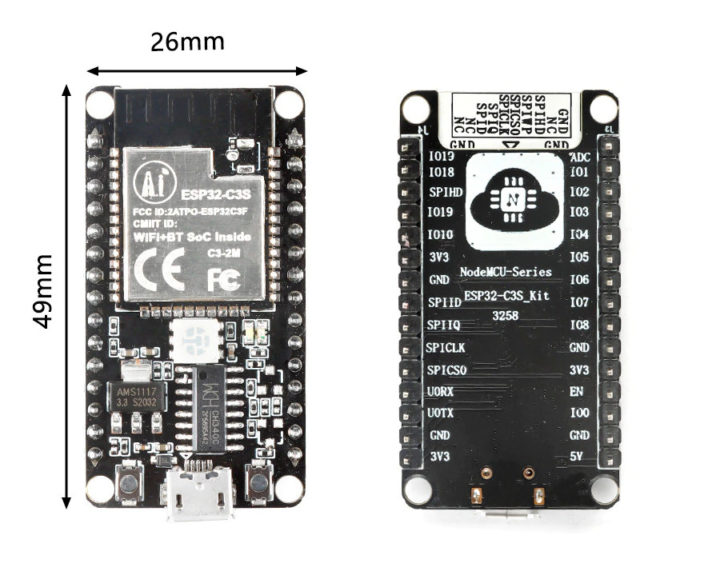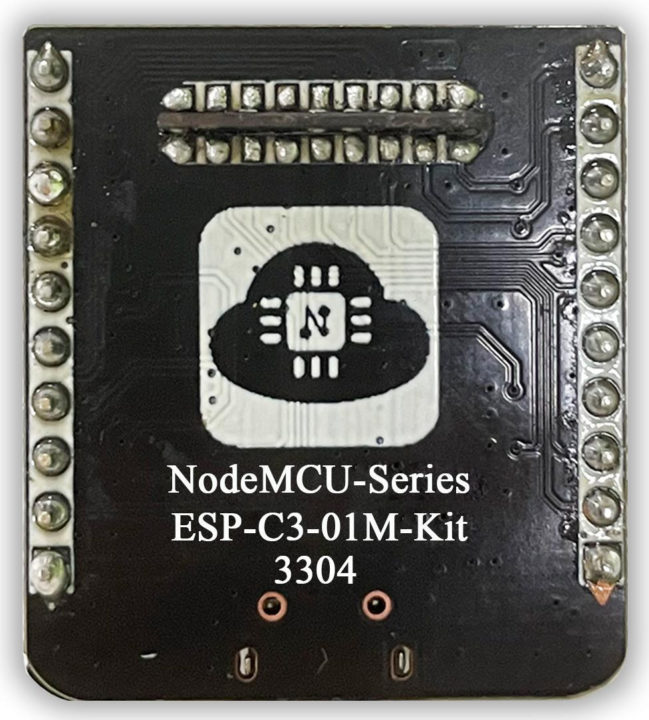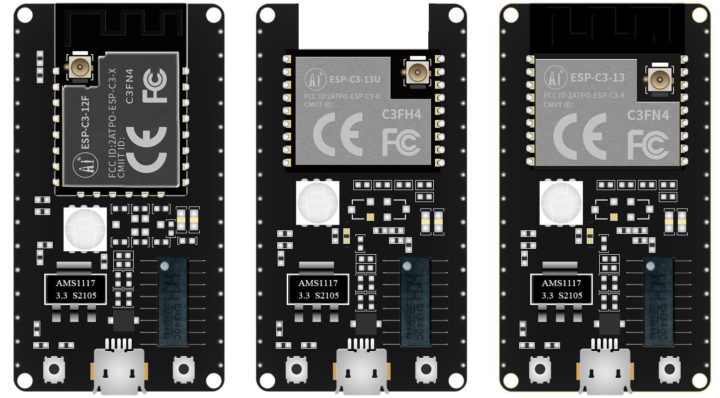ESP32-C3 RISC-V IoT processor with 2.4 WiFI and Bluetooth LE 5.0 was unveiled in December 2020, and Espressif Systems’ own ESP32-C3-DevKitM-1 board has been available in limited quantities as an “engineering sample”.
But now I’ve noticed third-party NodeMCU ESP32-C3 boards are being sold on Aliexpress for around $4 with ESP32-C3S_Kit and ESP-C3-01M-Kit both based on AI Thinker ESP32-C3 modules announced a few months ago.
NodeMCU ESP32-C3S_KIt
- Wireless module – AI Thinker ESP32-C3S (footprint compatible with ESP32-S / ESP32-WROOM-32D) with ESP32-C3 RISC-V processor @ 160 MHz, 2.4 GHz WiFi, Bluetooth 5.0 LE, 4MB flash, on-board PCB antenna, and IPEX connector (which may be soldered or not).
- USB – Micro USB port for power and programming via CH340C USB to TTL chip
- Expansion – 2x 15-pin headers with GPIO, SPI, UART, ADC, I2S, 3.3V, GND
- Misc – RGB LED, Reset key, user-programmable key
- Dimensions – 49 x 26 mm
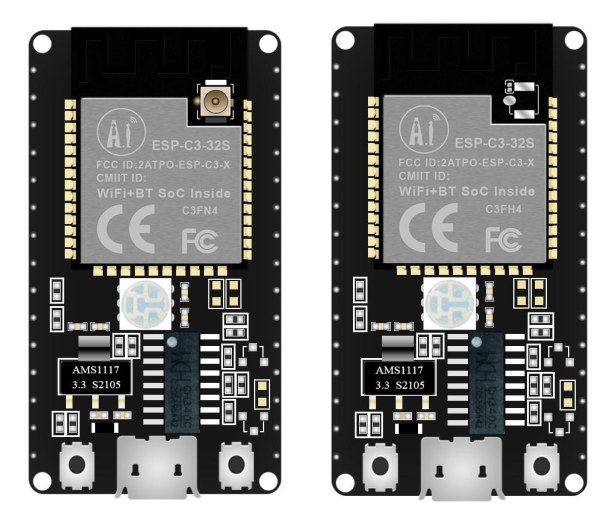
ESP32-C3S_Kit is also called ESP-C3-32S-Kit with the datasheet available on AI Thinker website. You’ll find the board for $4.29 on Aliexpress, or the just module for around $2.50.
NodeMCU ESP-C3-01M-Kit
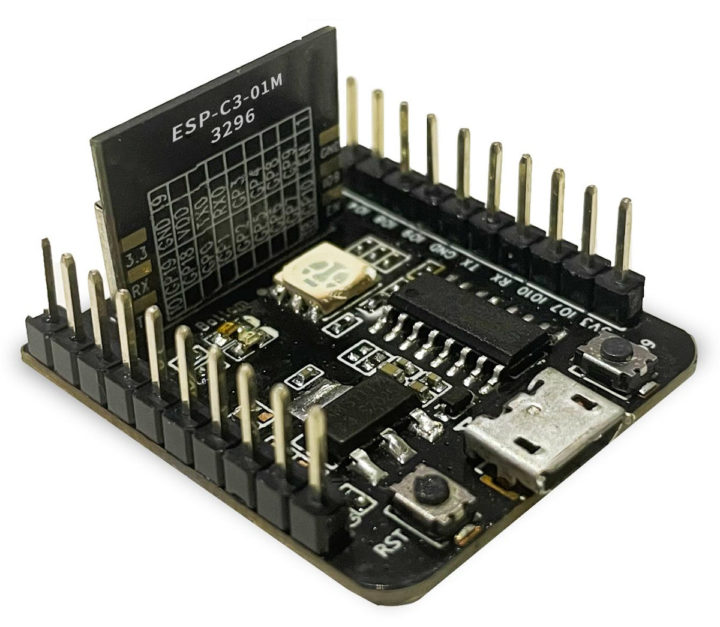
ESP-C3-01M kit specifications:
- Wireless module – AI Thinker ESP-C3-01M (previously known as ESP32-C3M) compatible with ESP-01M, with ESP32-C3 RISC-V processor @ 160 MHz, 2.4 GHz WiFi, Bluetooth 5.0 LE, 4MB flash, and an on-board PCB antenna.
- USB – Micro USB port for power and programming via CH340C USB to TTL chip
- Expansion – 2x 10-pin headers with GPIO, UART, SPI, ADC, I2S, 3.3V, GND
- Misc – RGB LED, Reset key, user-programmable key
- Dimensions – Approx 30 x 26 mm
Note that one of the SPI interfaces is gone. Again, you’ll find the datasheet on AI Thinker website. The board is slightly cheaper at $3.55, but in my case shipping is more expensive.
Software support
None of the Aliexpress pages point to software resources for the NodeMCU ESP32-C3 boards. But AI Thinker documentation website has a dedicated section for ESP32-C3 modules and development boards. The company points to the ESP-IDF framework and offers a WeChat applet Bluetooth + WiFi dual control application demo together with source code. There’s no support for NodeMCU Lua firmware at this time.
The documentation also included datasheets for three more boards in a form factor similar to NodeMCU ESP32-C3S_KIt, but with other modules from the company:
- ESP-C3-12F_Kit with ESP-C3-12F module equipped with 2MB or 4MB flash, and IPEX antenna connector
- ESP-C3-13U_Kit with ESP-C3-13U module equipped with 2MB or 4MB flash, and IPEX antenna connector
- ESP-C3-13_Kit with ESP-C3-13 module equipped with 4MB flash, on-board antenna, and IPEX antenna connector

Jean-Luc started CNX Software in 2010 as a part-time endeavor, before quitting his job as a software engineering manager, and starting to write daily news, and reviews full time later in 2011.
Support CNX Software! Donate via cryptocurrencies, become a Patron on Patreon, or purchase goods on Amazon or Aliexpress


